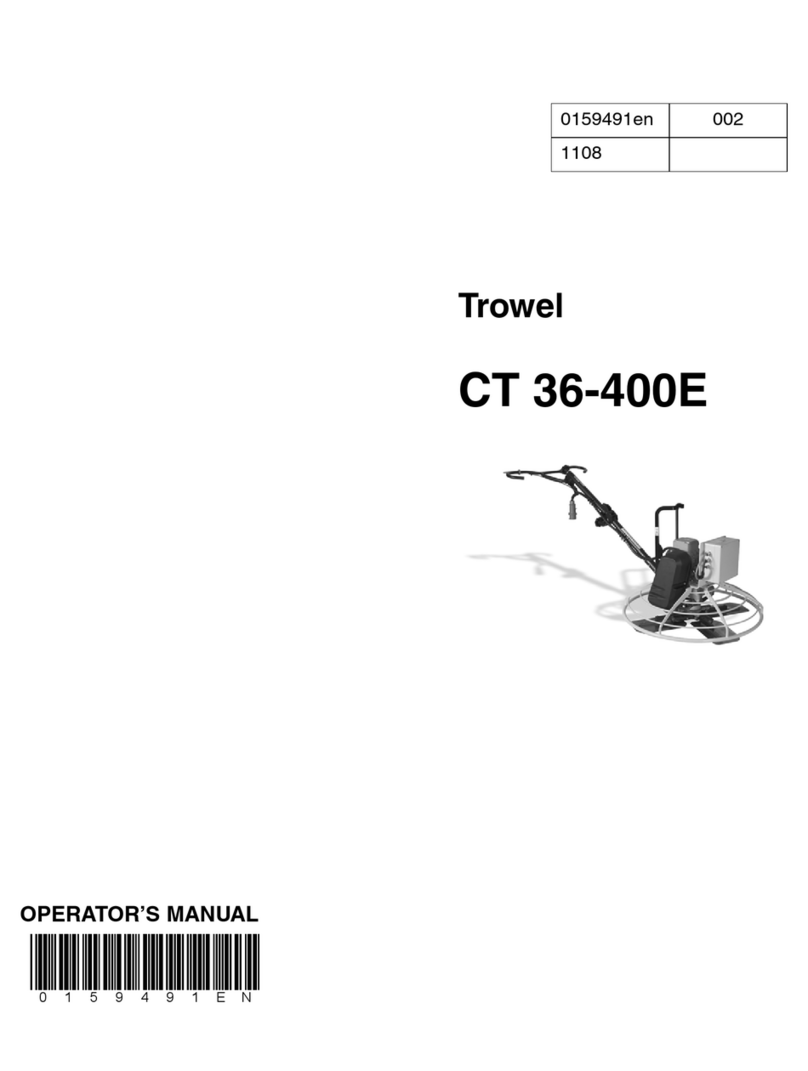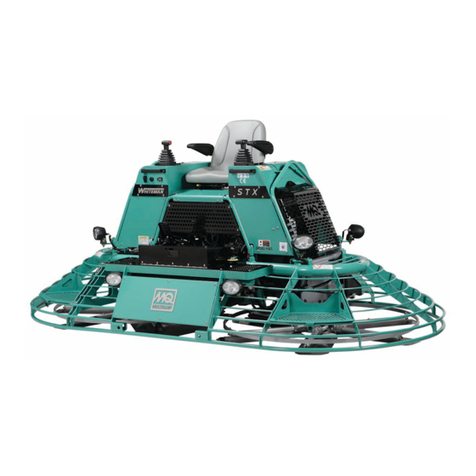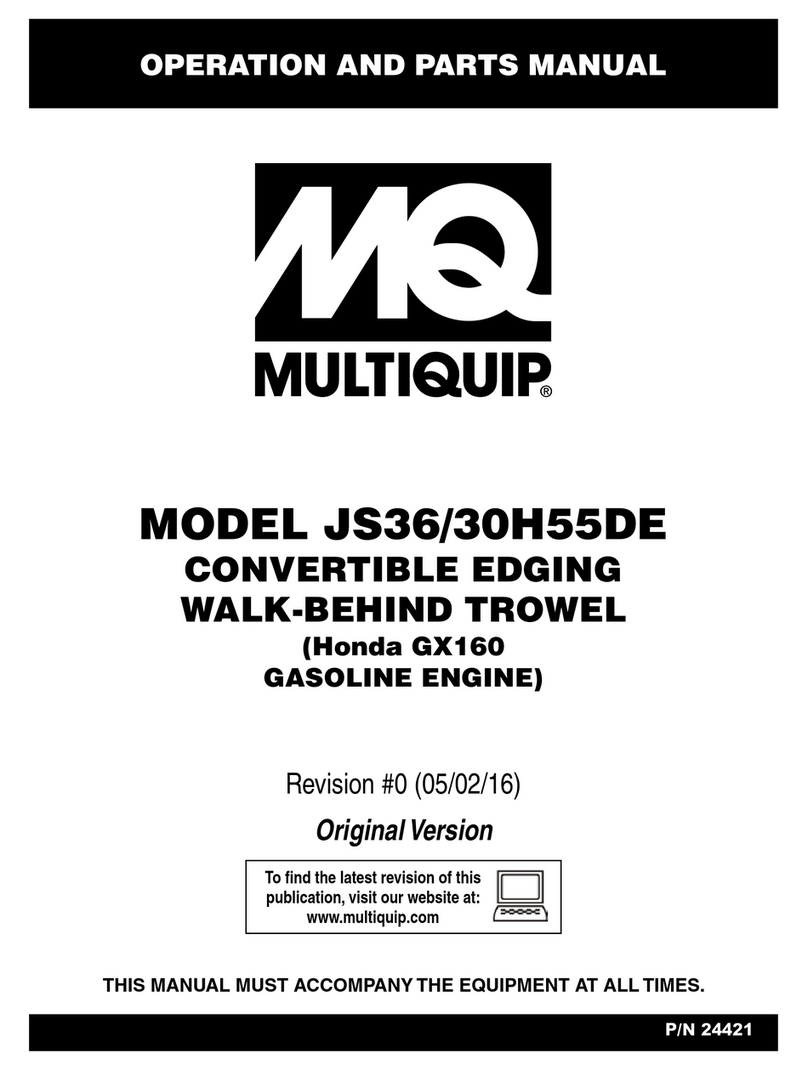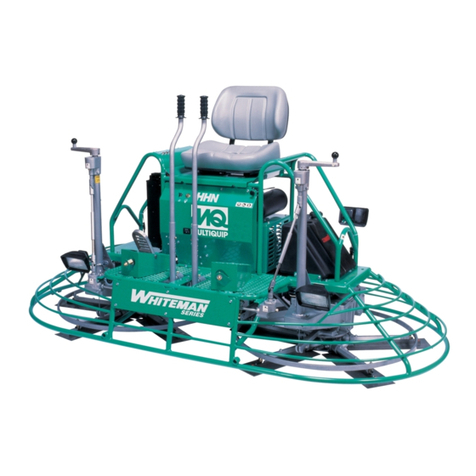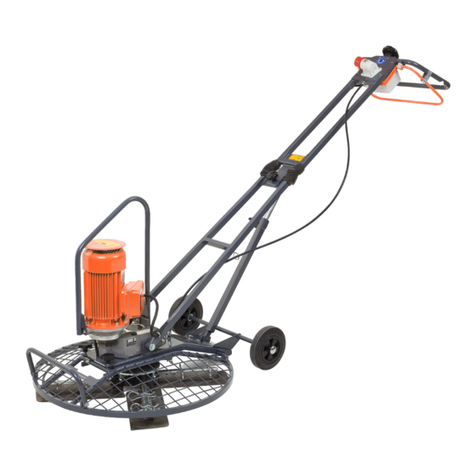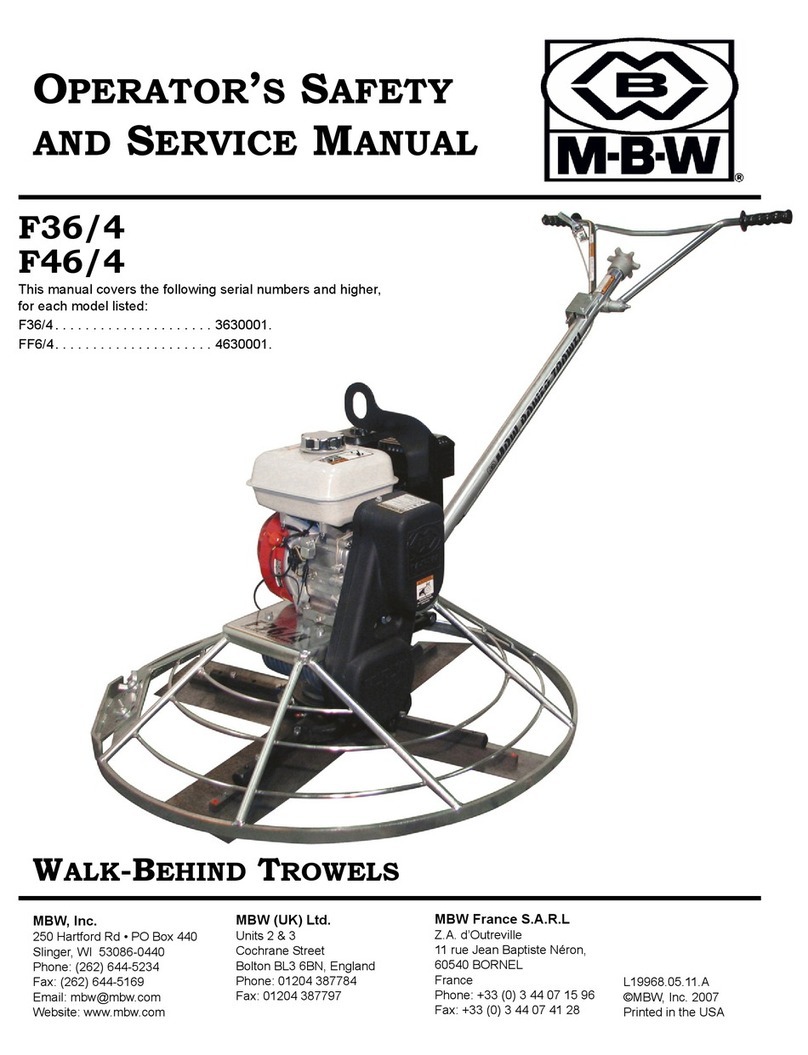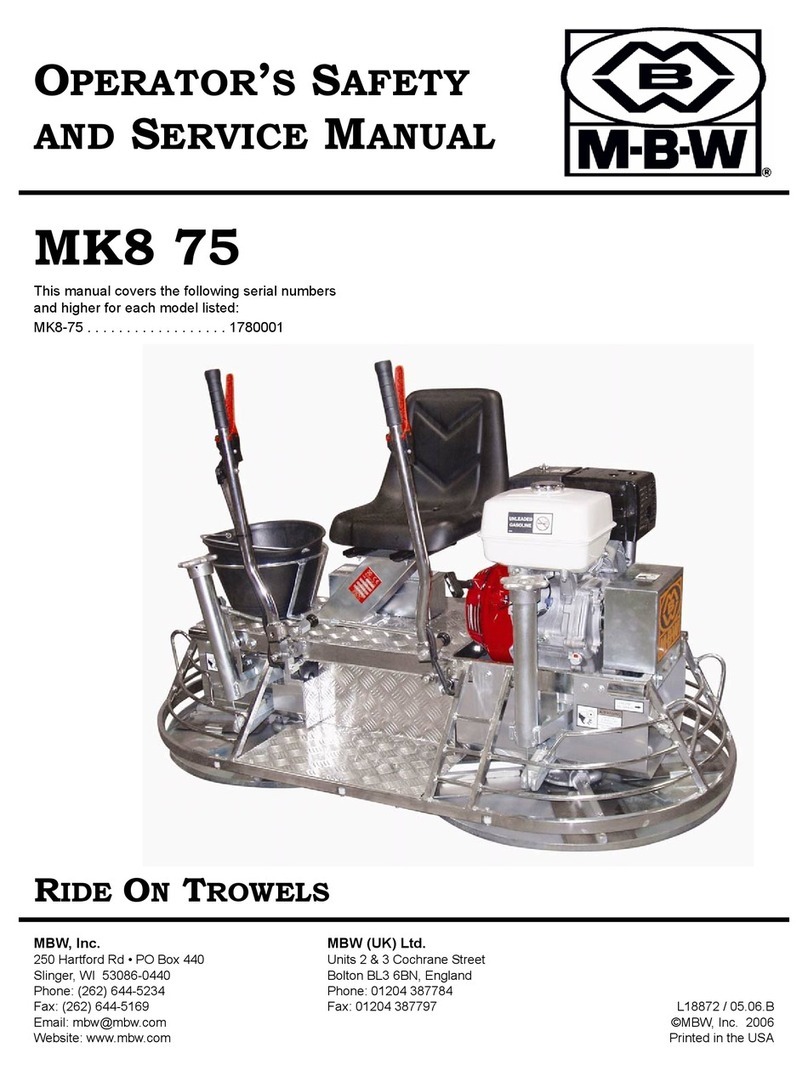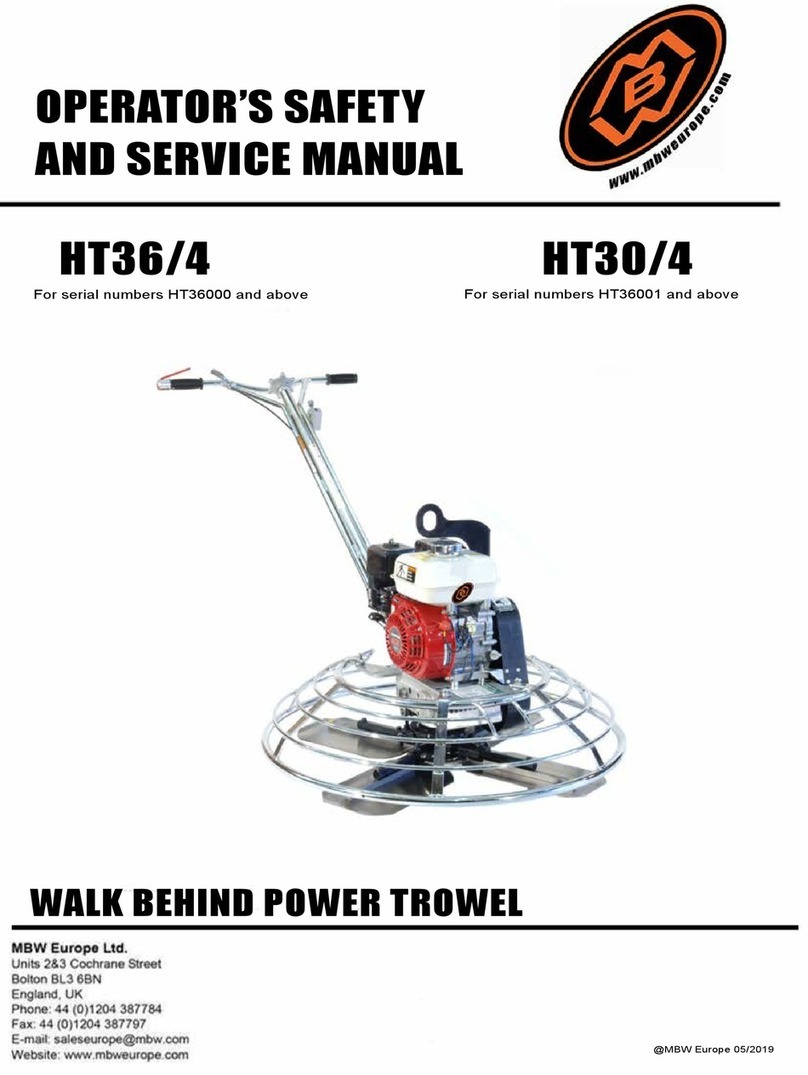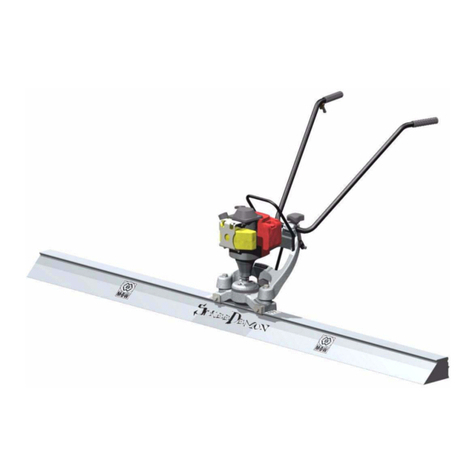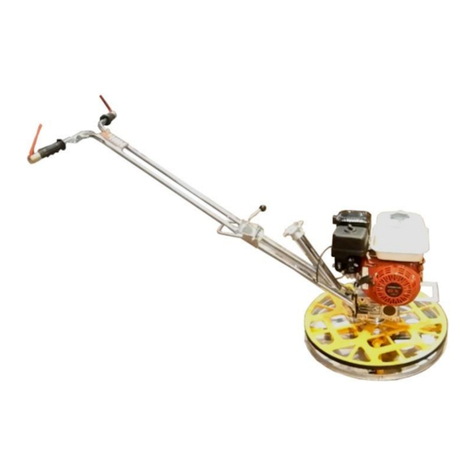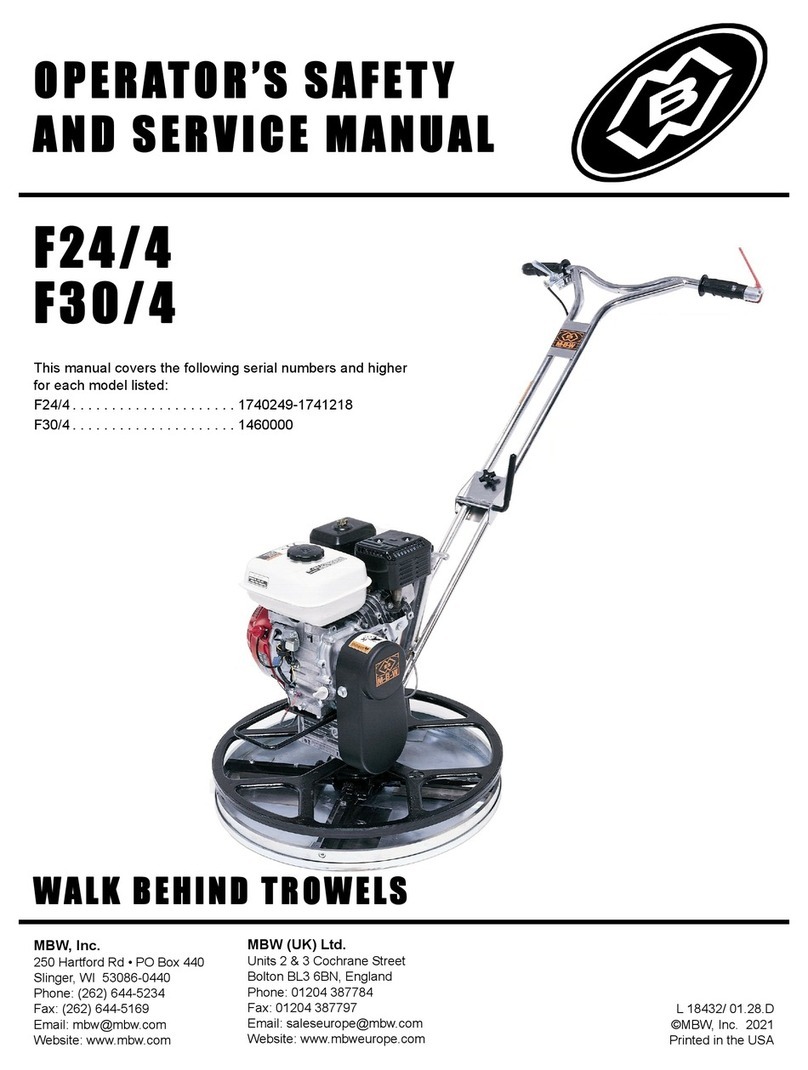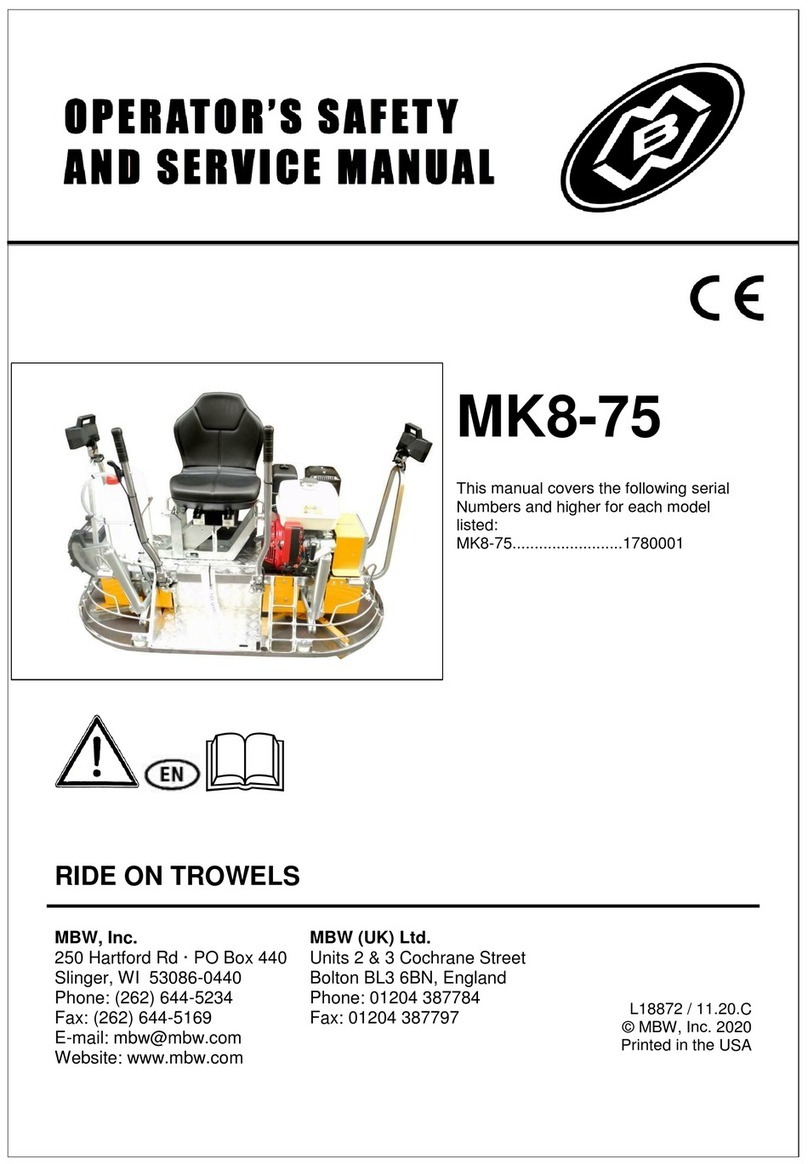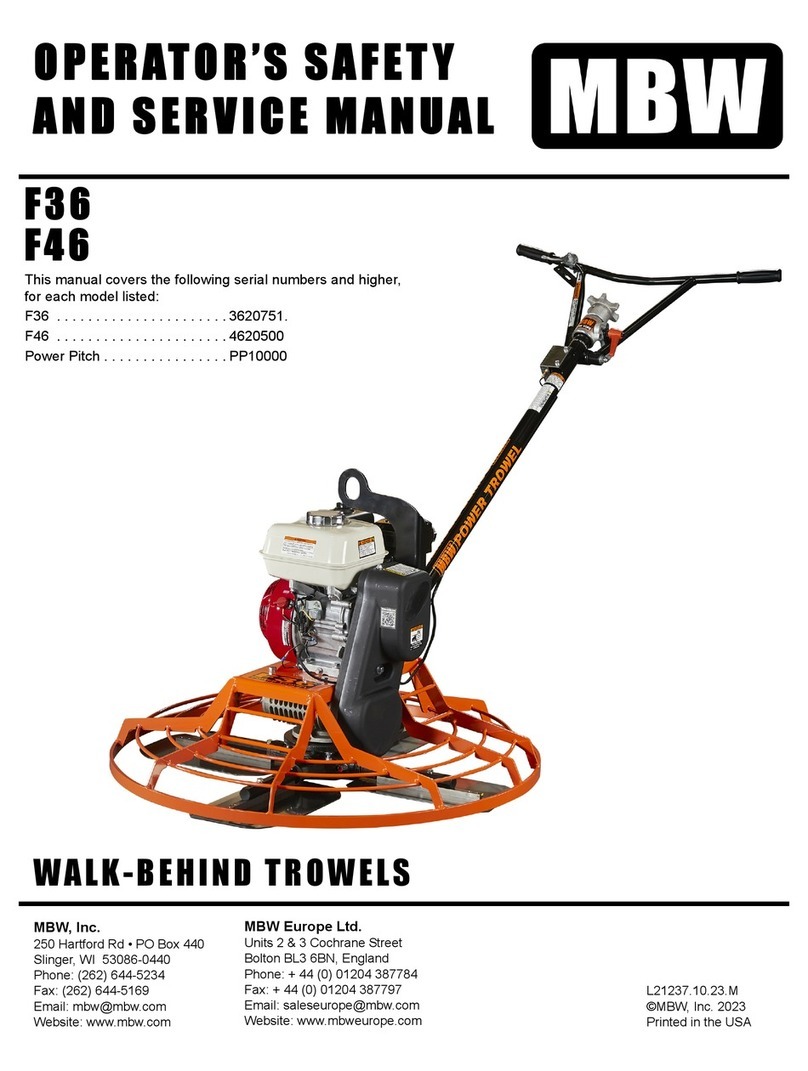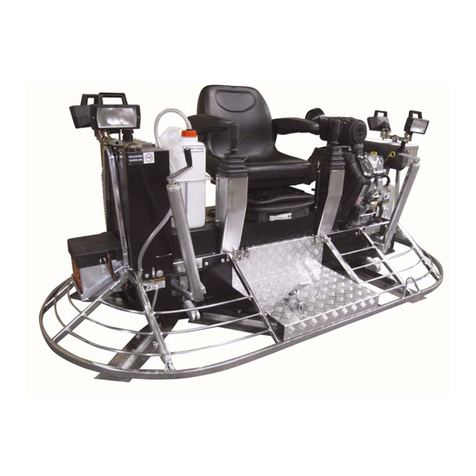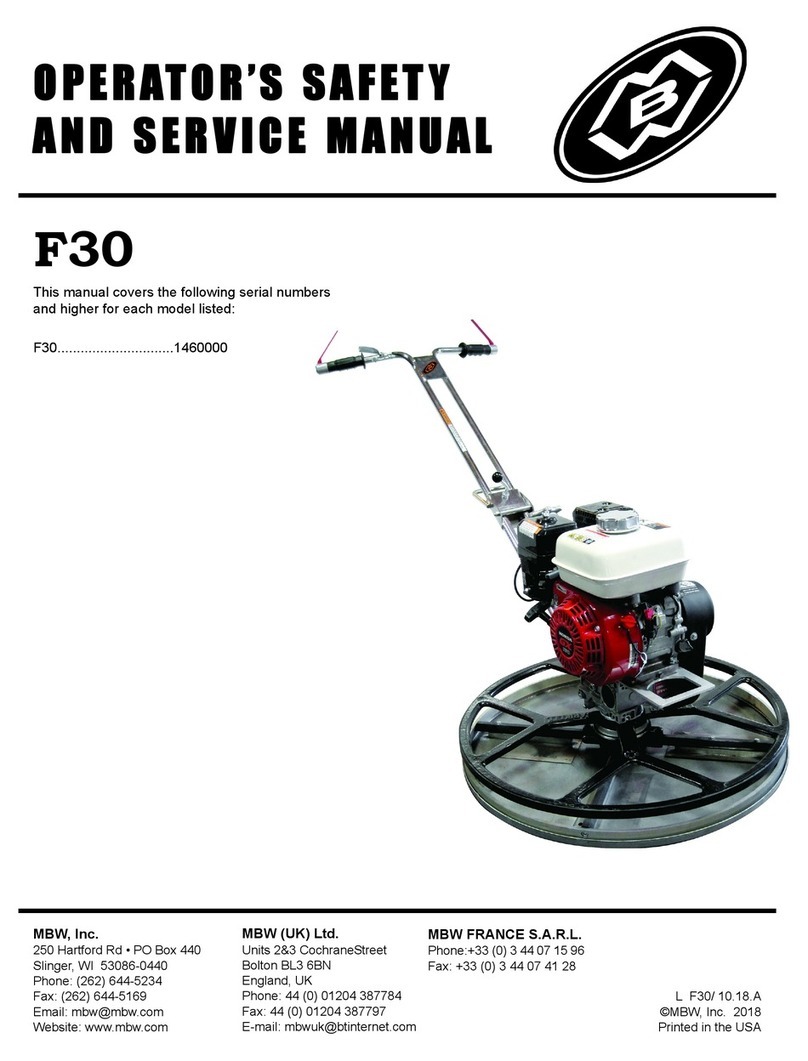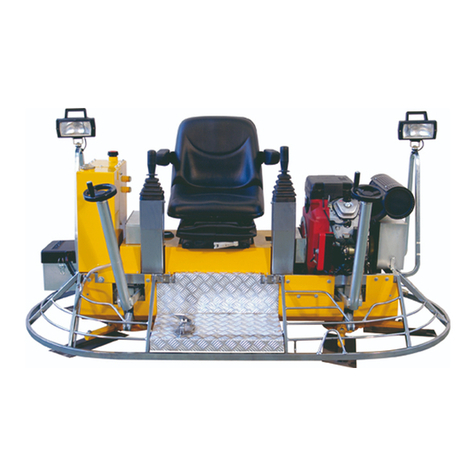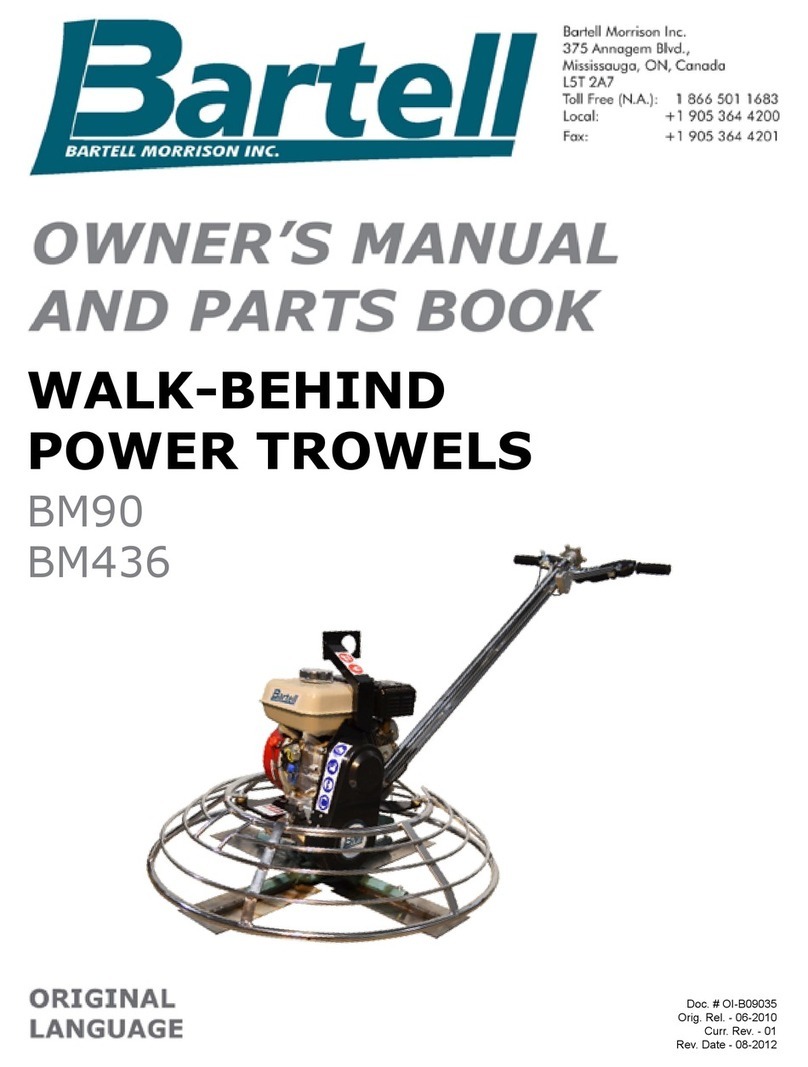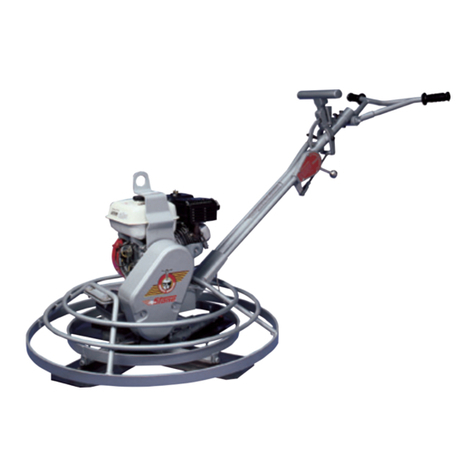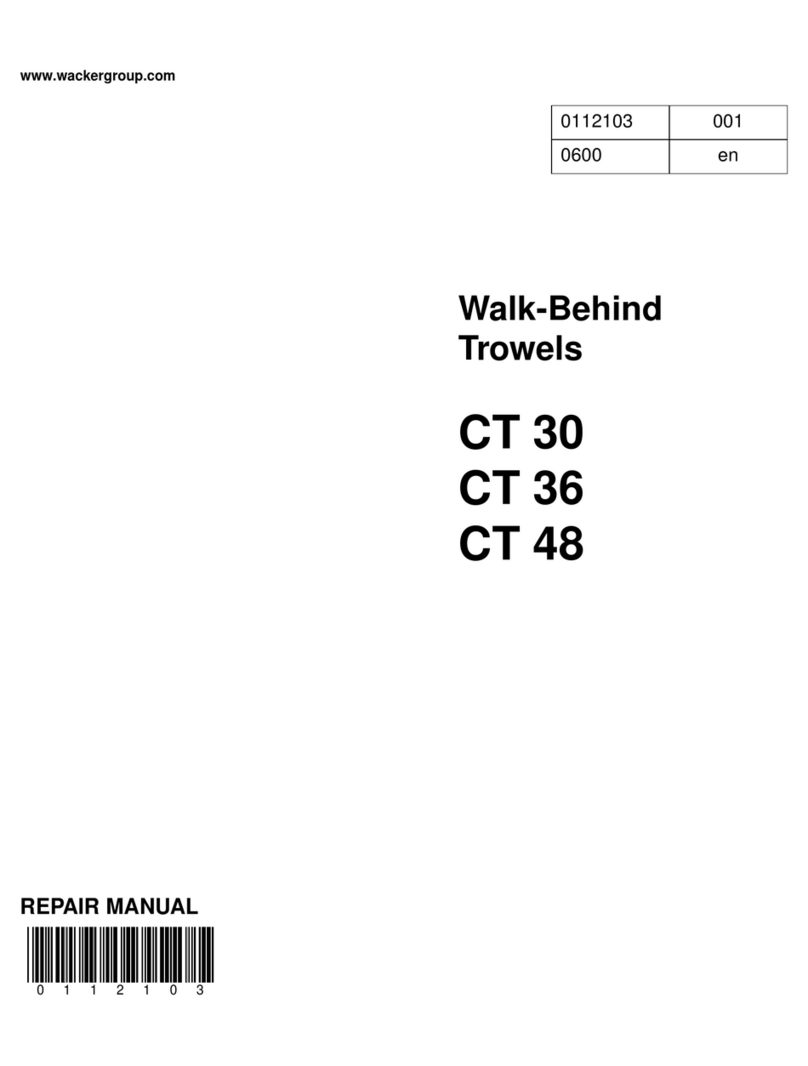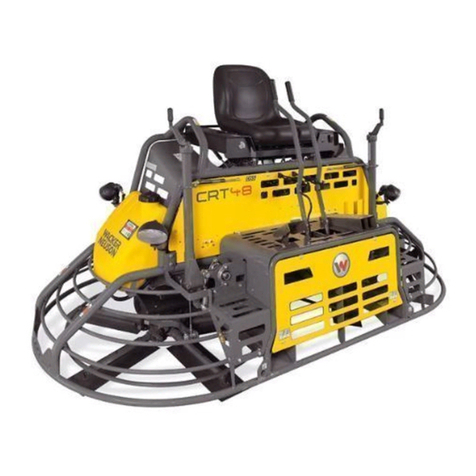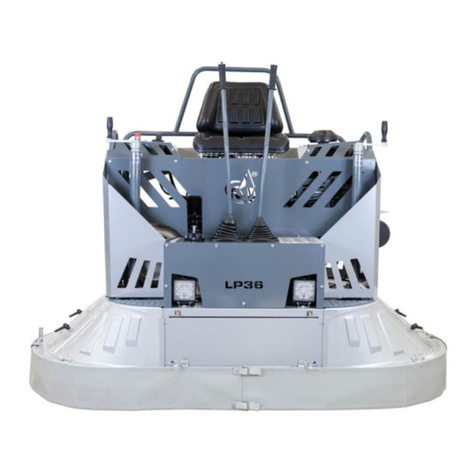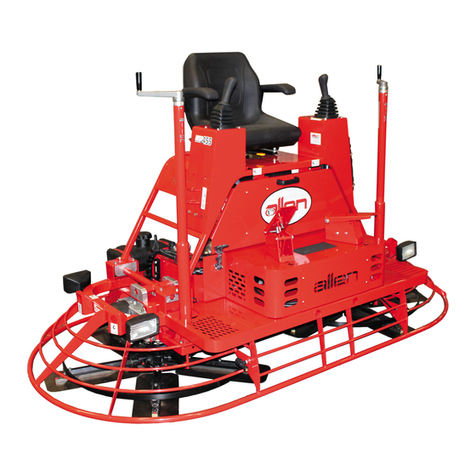8. W A R R A N T Y
New machines sold by the Company are covered by warranty with regard to the structure and the
use of proper materials under following terms:
1) The warranty is valid for twelve (12) months.
2) The manufacturer undertakes to repair or replace at its discretion those parts or assemblies
which it deems to be defective.
3) Parts repaired or replaced are covered by the same warranty as original parts, which expires
twelve (12) months after installation.
4) The manufacturer reserves an adequate period of time to carry out the necessary work and for
the delivery of the spare parts.
5) Transport costs of replacement parts covered by warranty will be charged to the purchaser.
6) This warranty expires if the product is repaired other than by authorised staff during the
warranty period.
7) Replaced parts during the warranty belong to the manufacturer.
8) Any components furnished by the Company but manufactured by others are warranted to the
extent of the original manufacturer's warranty to the Company. Any claims will be handed over
to the buyer.
9) This guarantee is for the sole benefit of the original buyer. Our responsibility under this
guarantee ends in case:
a) The buyer transfers ownership of the trowel;
b) Makes any changes in the trowel;
c) Or adds parts or devices not of our manufacture to the trowel.
10) MBW will not be responsible for damage to floors which might arise from improper
use of the machine, or for any other reason that the machine is stopped during the working
cycle.
11) This warranty does not cover any damages arising from an excessive stress, for instance when
the machine operates after the occurrence of a defect, or from improper use or maintenance,
use of improper materials and failure to comply with the instructions for use.
The same is valid for damage caused by normal wear and tear.
12) The manufacturer shall have no liability for any difficulties arising in re-selling or using broad
due to provisions for the protection of patent rights in force in the country where the machine is
sold.
13) With regard to engines, the terms of warranty of the original manufacturer are valid.
14) The terms of warranty set forth are binding for all MBW Dealers. Any different agreement will
be valid only prior to written confirmation by MBW.
9. M ARKINGANDCERTIFICATE
The models described in this instruction and maintenance manual have been checked to conform to
the machine directives CEE 89/392 including the successive modifications.
The qualification is issued on the CE-label on the machine and on the declaration of conformity
which goes together with this handbook.
